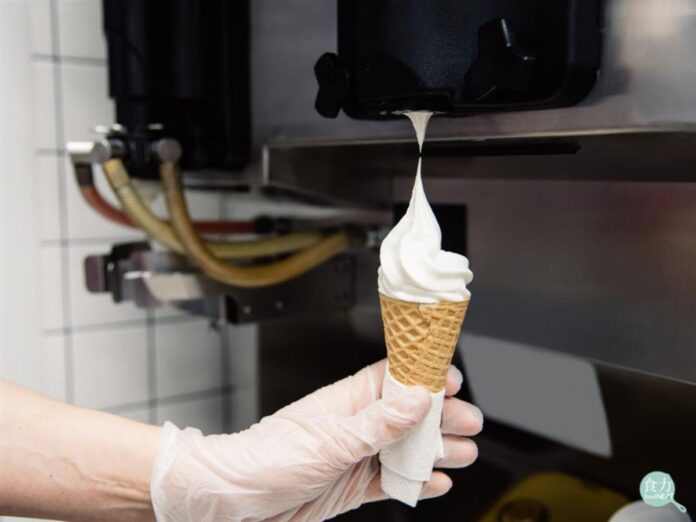Ice cream machines make your favourite flavours come true in any kitchen. What happens when the satisfying sound of ice cream making stops? It’s not uncommon to see an ice cream machine that won’t freeze. It’s frustrating to wait for a nice dessert at a summer party or a cosy night at home and discover it in liquid form. Understanding how these tools work might clarify typical concerns. Simple repairs and preventive measures can get you back to enjoying frozen goodies soon! Discuss ice creams and why your machine may be malfunctioning. We’ll look at peaceful solutions, too.
Common Issues With Ice Cream Machines
Ice cream machines are enjoyable but sometimes malfunction. Compressor failure is common. If this portion stops cooling the mix, your ice cream won’t sit and stay wet. Other issues include incorrect temperature selections. The machine won’t make a smooth flavour if it’s not frozen enough. Clogged or broken condensers complicate non-freezing. Midway, check the pin for taylormate hex coupler, as issues here can impact machine performance. A little cleanup may cure the issue. To avoid accidental pauses on ice cream days, watch out for these difficulties! Knowing these typical issues simplifies repairs.
A. Malfunctioning Compressor
The engine is your ice cream machine’s major component. Your beloved dessert won’t freeze properly if it stops operating. A compressor may show indicators of failure. If your system is on but not cooling or producing unusual noises, it may be broken. These issues frequently result from usage. Occasionally, a tripped breaker or electrical issue affects generator power. Sometimes, interior parts require repair or replacement. Regular compressor inspections can avoid issues. Make sure your ice cream machine has enough air circulation to avoid burning and malfunctioning.
B. Incorrect Temperature Settings
The improper temperature settings might affect how your ice cream machine freezes. If the temperature is too high, your mix may stay runny instead of solidifying. Changing the thermostat or control box is simple but crucial. Set it up properly for optimal results. Machines frequently have temperature specs. Regular outcomes are achieved by following these criteria. Room temperature and humidity can affect the performance of an ice cream machine. A hotter climate may necessitate adjustments. Remember that changing goods or procedures typically requires adjusting cooking temperatures. To keep things smooth, adding fruits or candies may require a colder climate. Always consult your model’s user manual for optimal temperature settings. This reduces stress when producing homemade frozen delights.
C. Clogged or Faulty Condenser
A clogged or damaged fan may be preventing your ice cream machine from freezing. Refrigerant heat is removed by this component, keeping everything cold. Dust and dirt can impede movement over time. The equipment has trouble maintaining freezing temperatures when this happens. Visually inspect the condenser coils for accumulation; clean them. If cleaning doesn’t work, the fan may be broken. Age or neglect can cause internal parts to fail. A damaged condenser may require expert replacement, but a blockage may generally be fixed at home with basic tools and care. Maintaining this part keeps your ice cream maker running smoothly and ready for ice cream.
Reasons Why An Ice Cream Machine May Not Freeze
There are several reasons your ice cream machine may not freeze properly. Blower failure is common. A faulty fan can’t circulate gas to cool objects. Incorrect temperature settings may cause another issue. An overheated device won’t freeze stuff. Broken or clogged condensers contribute to this issue. Garbage restricts airflow and reduces cooling. Using heated kitchen products without cooling might also slow freezing. These help protect your ice cream maker from freezing.
Fixing A Non-Freezing Ice Cream Machine
Check power first. Check your ice cream machine’s outlet and plug. An incorrect connection might cause it to malfunction. Next, examine the compressor for odd sounds or overheating. It may need expert attention if it’s operating but not cooling. Adjust heating as needed. Set the freezing point according to your model’s specifications. Condenser coil clogs should be checked. Dirt and dust restrict airflow and efficiency. Clean these stains carefully with a brush or cloth. Seals and gaskets should be checked for damage or wear. Broken parts reduce machine freezing.
Maintenance Tips to Prevent Freezing Issues
Keeping your ice cream machine running requires regular maintenance. Clean inside and out frequently. The building that slows things down ceases. Inspect seals and coverings for damage. Damaged components let warm air in, reducing cooling. Replace these parts quickly to maintain functionality. Verify temperature settings regularly. Make sure they follow manufacturer instructions for optimal results. Clean the condenser to prevent dust from blocking airflow and preventing the unit from freezing. Try utilising nice materials that fit your plan. Chemicals can cause freezing or internal damage.
Other Home Ice Cream Machine Repair Options
Consider hiring a professional if you can’t fix your ice cream machine. A professional can spot complex causes of freezing. This option may save time and improve your machine. Business machine rental is another alternative. For events that require ice cream immediately, this option allows you to deliver delectable desserts without waiting for fixes.
Also, read: How To Make A Soft Serve Ice Cream? Common Mistakes To Avoid








